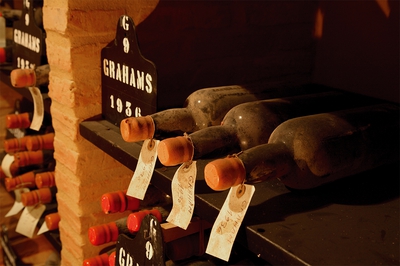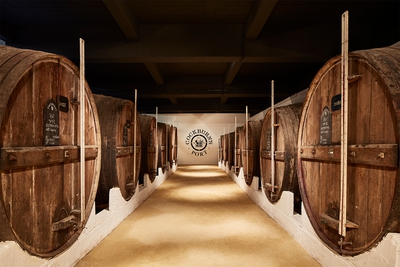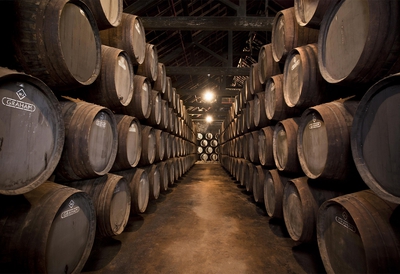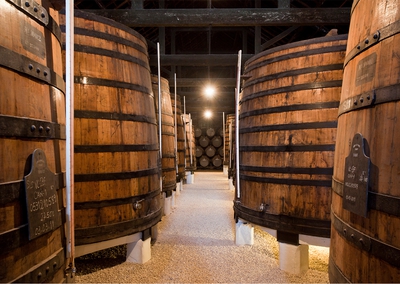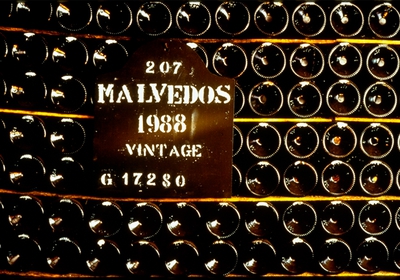Following the harvest, wines are kept in the Douro over the winter then are sent to Vila Nova de Gaia, on the opposite bank of the Douro River from Porto, for aging. Over the years the master blender personally evaluates each lot. He then begins to make trial blends and sketch out plans for each individual barrel. He will then determine if the wines are destined to become vintage, ruby, or tawny ports.
Wood-Aged Ports
These are Ports that are aged in contact with oxygen in small seasoned oak barrels (pipes) or larger seasoned oak vats.
The life cycle of a wood aged port lies in the capable hands of the Master Blender and Cellar Master. Their job is not only to create blends from previously aged wines but also interpret the wine's future evolution and set aside specific lots to age for subsequent generations. Thus, they elongate the life and history of a Wood-aged Port.
Bottle-Aged Ports
These are primarily Vintage Ports that are bottled young, unfiltered, with a driven cork, and are then aged in the cellar. They develop more slowly than wines in barrel.
The life cycle of vintage port, aging in bottle for many years, is frequently likened to the life cycle of humans – generally an engaging childhood is followed by a possibly awkward adolescence and then years of maturity when the wine becomes more complex, interesting and rewarding. Whilst this trajectory is typical, it is certainly not an iron-clad rule for port any more than for people as every vintage is different and you cannot anticipate exactly how it will develop. Bear in mind, proper storage makes a difference. Wine that has been stored where it has experienced rapid temperature swings or been consistently exposed to strong light can adversely affect the character and life of the wine.
